I blogged about how saddle valves are illegal products in Minnesota nearly five years ago, but it’s time for an update on that topic with some more information.
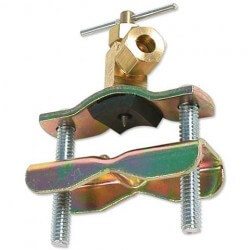 To start, that’s a saddle valve pictured at right. These are devices that allow for a very fast, cheap, do-it-yourself installation of a ¼” water supply line, typically used to supply water to ice makers and whole-house humidifiers.
To start, that’s a saddle valve pictured at right. These are devices that allow for a very fast, cheap, do-it-yourself installation of a ¼” water supply line, typically used to supply water to ice makers and whole-house humidifiers.
Saddle valves are installed by tightening a metal clamp onto a water pipe, then tightening down a needle valve until it pierces the water pipe. No cutting of pipes is required, no soldering, no special tools… simple. Very DIY. The needle just pokes a hole in the pipe, and I’ve heard it can be done without even turning off the water… not that I’ve ever tried. There has to be a catch, right?
There is. These saddle valves are prone to leakage, and they’re not allowed by the Minnesota State Plumbing Code.
There is actually nothing in the Minnesota State Plumbing Code that specifically prohibits these types of valves; they’re just not approved. Section 4715.0420 of the MN State Plumbing Code gives a list of approval standards. Saddle valves don’t have one.
Most of them don’t leak, but they have a much higher chance of leaking than a properly installed water valve. My advice is to not use saddle valves. When installing an ice maker or whole-house humidifier, tap off of an existing water line with a proper tee fitting and have a proper shutoff valve installed. It will take a little more time to do it right, but you’ll dramatically lower the potential for leaks.
If you already have a saddle valve in your home, try to leave it alone. Every time you operate the valve, you increase the potential for a leak. If you already have a saddle valve installed and you’d like to replace it with a proper stop valve, read on.
How to replace a saddle valve
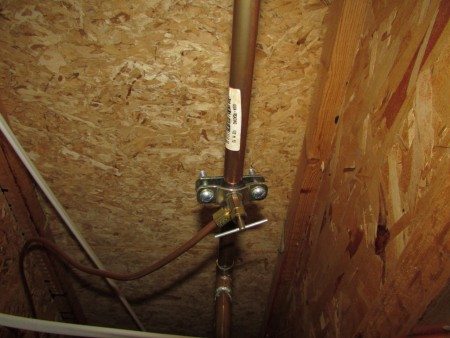 There has been a saddle valve installed for the ice maker at my own house since I moved in over four year ago. I haven’t touched it and it hasn’t leaked, but I thought this would make for a nice little project where I could lay out the basic steps of replacing a saddle valve. This isn’t a full how-to, however; I’m just laying out the basic steps that are involved.
There has been a saddle valve installed for the ice maker at my own house since I moved in over four year ago. I haven’t touched it and it hasn’t leaked, but I thought this would make for a nice little project where I could lay out the basic steps of replacing a saddle valve. This isn’t a full how-to, however; I’m just laying out the basic steps that are involved.
To replace a saddle valve or tee off an existing water line, start by obtaining the needed parts. I’m assuming the saddle valve is connected to a ½” copper water line. If you’re comfortable soldering copper tubing and you already have the equipment to do it, this project will cost about $10. If not, this project will cost about twice as much by using a push fitting tee.
Push fittings are extremely easy to use, requiring no special tools to make connections to copper, PEX, or CPVC tubing. They’ve proven to be reliable, but they’re far more expensive than traditional copper fittings. The most commonly known push fittings are made by SharkBite®, but there are several other ones available, such as PDQ™ and Blue Hawk.
The photo below shows the stuff you’ll need for this project.
You’ll need a pipe cutting tool whether you decide to solder the copper fittings or use a push fitting. The parts needed for this project are a ½” copper tee or a ½” push fitting tee, a short length of ½” copper tubing, and a stop valve with a ½” copper tubing inlet and a ¼” compression outlet. Oddly enough, a ¼-turn push fitting valve goes for $8.72 at Home Depot, while the inferior-in-every-way multi-turn compression valve goes for $9.76. Naturally, I bought the push fitting valve.
Once you have the stuff that’s needed, shut off the water to your home and drain the water lines. Remove the saddle valve and cut the water line just before and just after the location where the saddle valve was located. This should leave a small gap in the water line, which you’ll bridge with the tee fitting. Here’s a video on soldering a tee, and here’s a video on using a push fitting. Stick the short length of copper tubing into the open end of the tee fitting; this is what you’ll need to connect the stop valve to. Once that’s in, you should have something that looks like the photo below:
Don’t bother commenting on the super ugly soldering job. I know.
Now, all that’s left is to install the stop valve. If you’re using a push fitting valve, push it onto the end of the ½” copper tubing, then connect the ¼” water line to the other end. It should now look like this:
That’s it, that’s all.

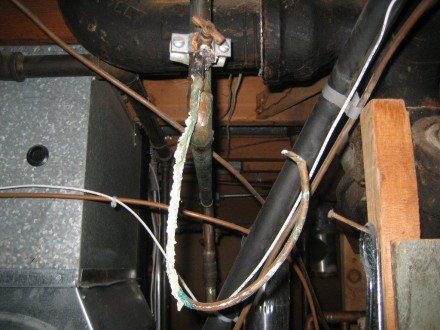
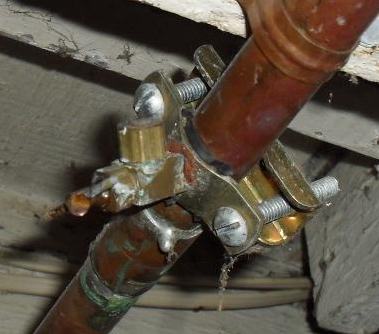
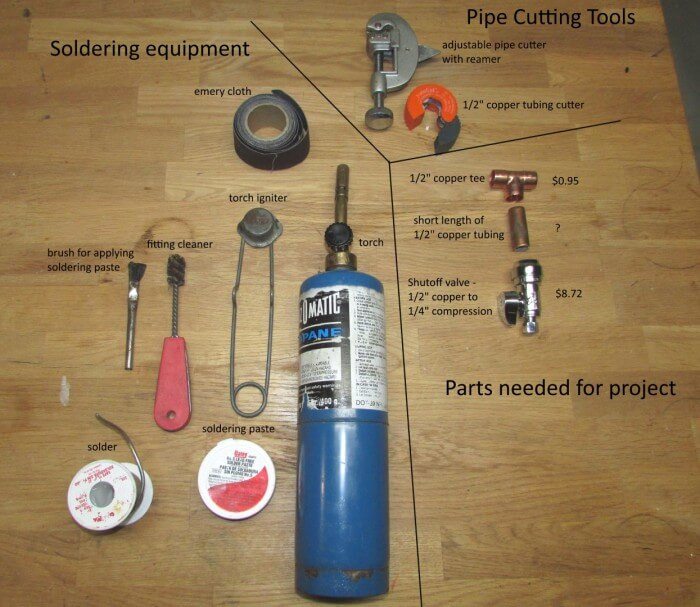
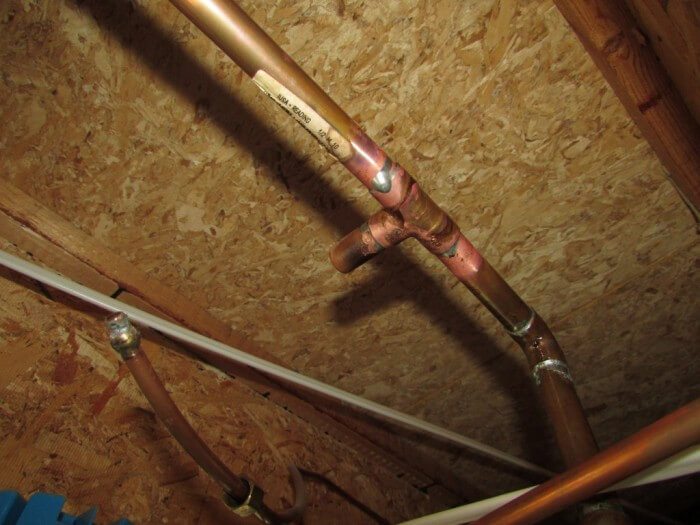
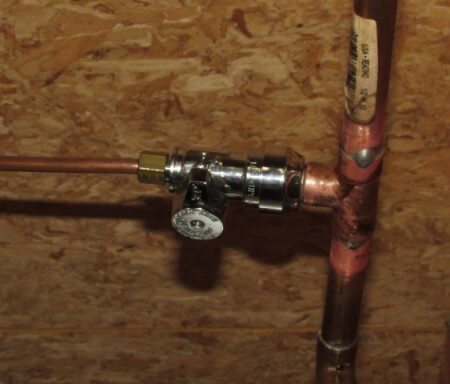
Martha
April 2, 2015, 7:37 am
Hi Reuben,
I found an old post of yours about another illegal plumbing item:
“Bottle Traps – Another illegal plumbing trap is any type that relies on concealed partitions to create a trap – such as a bottle trap (4715.0960). They come in several varieties.”
I have been trying to purchase an attractive P-trap for a sink in my home (it’s wall mounted and all of the plumbing is exposed) and am concerned that they might fall into this category. Can you tell me if these items are still considered illegal in MN? Here are some examples:
http://www.nameeks.com/product/P-trap/Remer-958L.html
http://www.us.kohler.com/us/Contemporary-round-bottle-trap,-1-1-4-x-1-1-4/productDetail/Bathroom-Fittings/427262.htm
http://www.kingstonbrass.com/ProductDetails.asp?ProductCode=CC53301DLLKB30
Reuben Saltzman
April 2, 2015, 2:05 pm
Hi Martha,
Yes, all three of those traps have concealed partitions, putting them into the “prohibited” category.